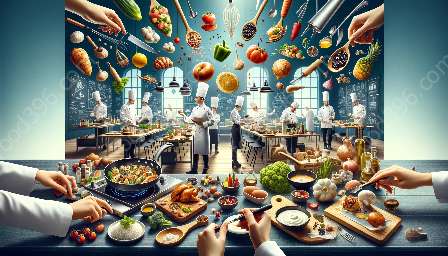Fermentation and pickling are ancient food preservation methods that have reemerged as popular culinary trends, offering unique flavors, textures, and health benefits. In this comprehensive guide, we delve into the science behind fermentation, the art of pickling, ingredient selection and preparation, and the culinary training needed to master these techniques.
The Science of Fermentation
Fermentation is a natural process in which microorganisms, such as bacteria, yeast, or fungi, break down complex organic compounds in food to produce a range of desirable byproducts, including acids, alcohols, and gases. This transformative process not only preserves food but also enhances its flavor, texture, and nutritional value.
Common fermented foods include sauerkraut, kimchi, yogurt, kefir, kombucha, and sourdough bread. The key to successful fermentation lies in creating the optimal conditions for the proliferation of beneficial microorganisms while preventing spoilage by harmful pathogens.
Ingredient Selection for Fermentation
When selecting ingredients for fermentation, it's essential to choose high-quality, fresh produce that is free of chemical additives and preservatives. Vegetables, fruits, dairy, and grains can all undergo fermentation to produce a diverse array of delicious and nutritious products.
Preparation Techniques for Fermentation
Proper preparation of ingredients is crucial for successful fermentation. This may involve washing, cutting, and seasoning the raw ingredients, as well as controlling factors such as temperature, time, and microbial inoculation. By understanding the specific requirements of each fermentation process, aspiring fermenters can achieve consistent and desirable results.
The Art of Pickling
While fermentation is a broad category that encompasses various food preservation techniques, pickling specifically involves immersing food in an acidic solution, such as vinegar, to preserve and flavor it. Pickled foods can range from crunchy cucumbers to tangy chutneys, offering a delightful blend of sourness, sweetness, and spiciness.
Popular pickled foods include cucumbers (pickles), beets, carrots, onions, and peppers. The pickling process not only imparts unique flavors to the ingredients but also extends their shelf life, allowing for year-round enjoyment of seasonal produce.
Ingredient Selection for Pickling
The selection of fresh, firm, and unblemished produce is essential for successful pickling. The acidity of the pickling solution, often created with vinegar, salt, sugar, and spices, acts as a preservative, maintaining the color, texture, and nutritional value of the pickled ingredients.
Preparation Techniques for Pickling
Preparing ingredients for pickling involves carefully cleaning, trimming, and slicing them to the desired shapes and sizes. Additionally, creating a well-balanced pickling solution and ensuring proper sterilization of jars are important aspects of the pickling process. Understanding these techniques is vital for achieving safe and delicious pickled products.
Culinary Training for Fermentation and Pickling
While fermentation and pickling can be approached as amateur kitchen experiments, formal culinary training offers a deeper understanding of food science, safety protocols, and creative applications. Culinary schools and workshops often provide specialized courses on fermentation, pickling, and food preservation, allowing aspiring chefs and enthusiasts to develop their skills under the guidance of experienced professionals.
Embracing the Art and Science of Fermentation and Pickling
Whether as an amateur home cook or a professional chef, mastering the art and science of fermentation and pickling opens up a world of culinary creativity and gastronomic delight. By carefully selecting ingredients, mastering preparation techniques, and pursuing culinary training, individuals can embark on a flavorful journey through the captivating realm of fermented and pickled foods.

